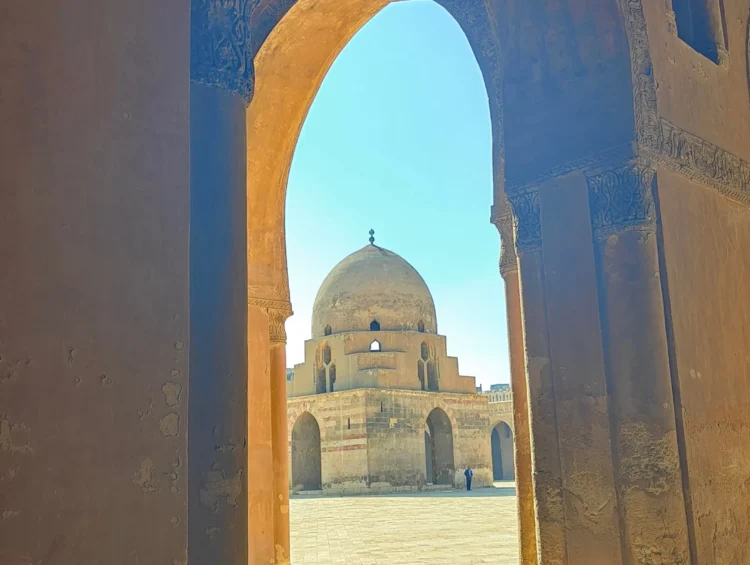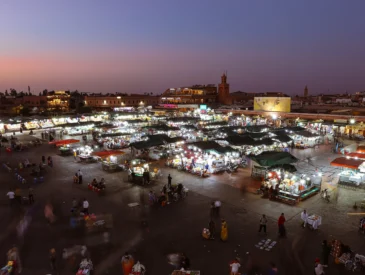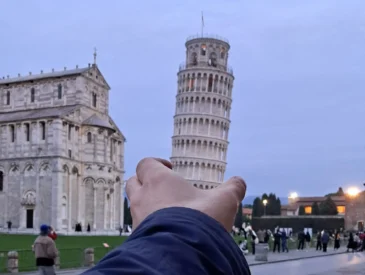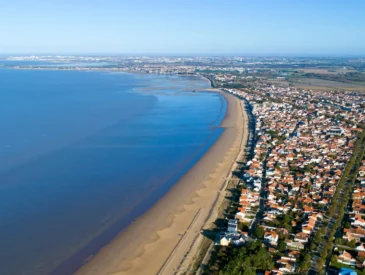From the Ancient Egyptian civilizations to the Roman Empire, Umayyads, Abbasids, Fatimids, Ayyubids, Mamluks, and Ottomans, Cairo has been a massive heritage site hosting them all. We entered this city of grand history by road from the south, greeted by large checkpoints at the city’s entrance. Crowds of people disembarked from vehicles, all bags were inspected, and after the checks, we were allowed into the city. At this point, a word of advice: be cautious with your belongings.
Giza
Giza was a place where we wondered how such beauty could coexist with surrounding chaos. Located 25 km from downtown Cairo, Giza is home to the pyramids, Egypt’s emblem. Our first planned stop in Cairo was the pyramids, so we booked a hotel in Giza for two days. Arriving late, we wanted to head directly to the hotel. One of the unique Egyptian taxi drivers kindly left us in a remote spot. Since Giza is one of Cairo’s poorer areas, we immediately experienced the extreme of Egypt’s famous tipping culture on our walk to the hotel. The time of night likely amplified this insistence. Narrow streets… somewhat dirty, too. And the Egyptian dogs – looking a bit like cats, with pointed ears and hairless bodies – were quite prevalent here.
As a reward for our patience, we enjoyed breakfast with a view of the pyramids. The fresh orange juice was excellent since Egyptian oranges are low in acidity, making them gentle on the stomach.
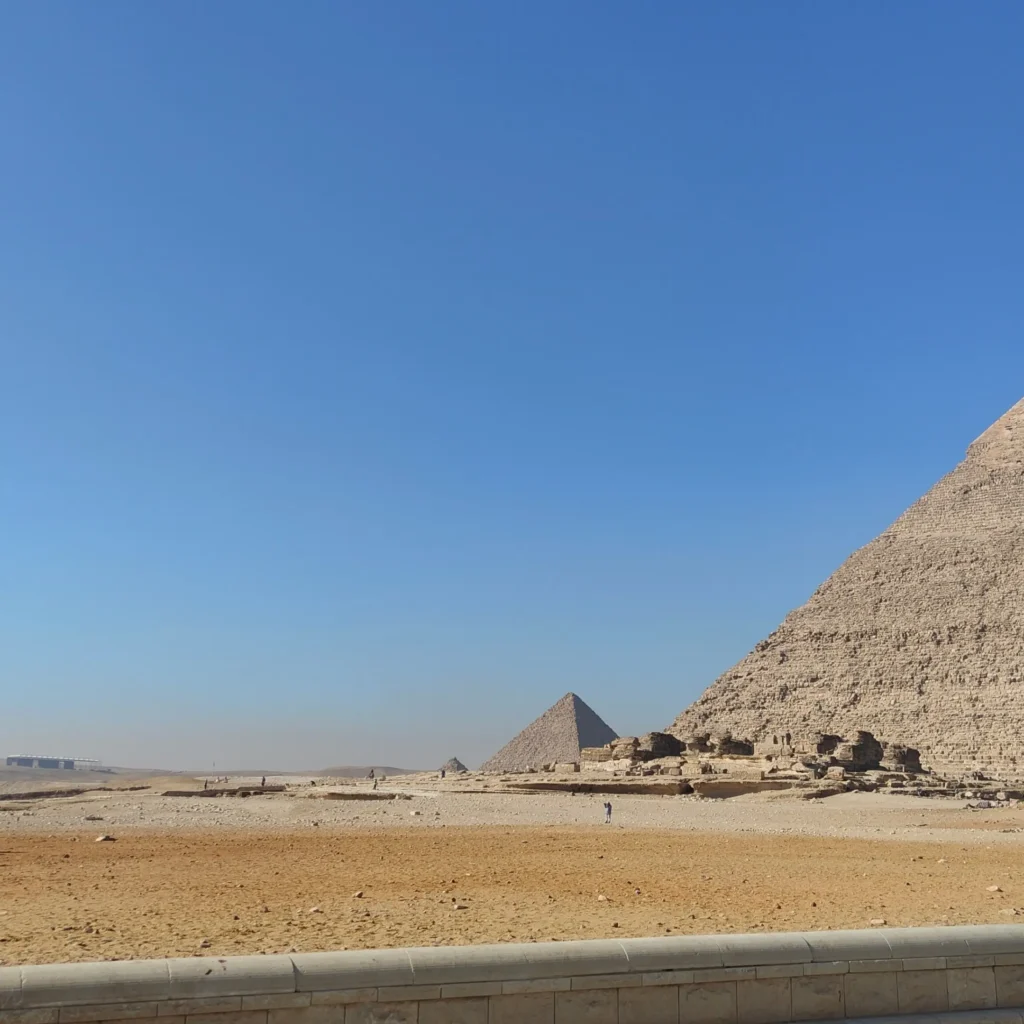
The Pyramids
Given their renowned status and the mysteries that unravel slowly over time, I won’t delve into the history of the pyramids here. The entry fees weren’t expensive, but the price didn’t include access to the interiors of the pyramids. We had to purchase an additional ticket for that. The path taken by horse-drawn carriages and camels created a nostalgic feel. Be aware, though; if you show too much interest, you may find the persuasive powers of a camel or horse rider are strong here.
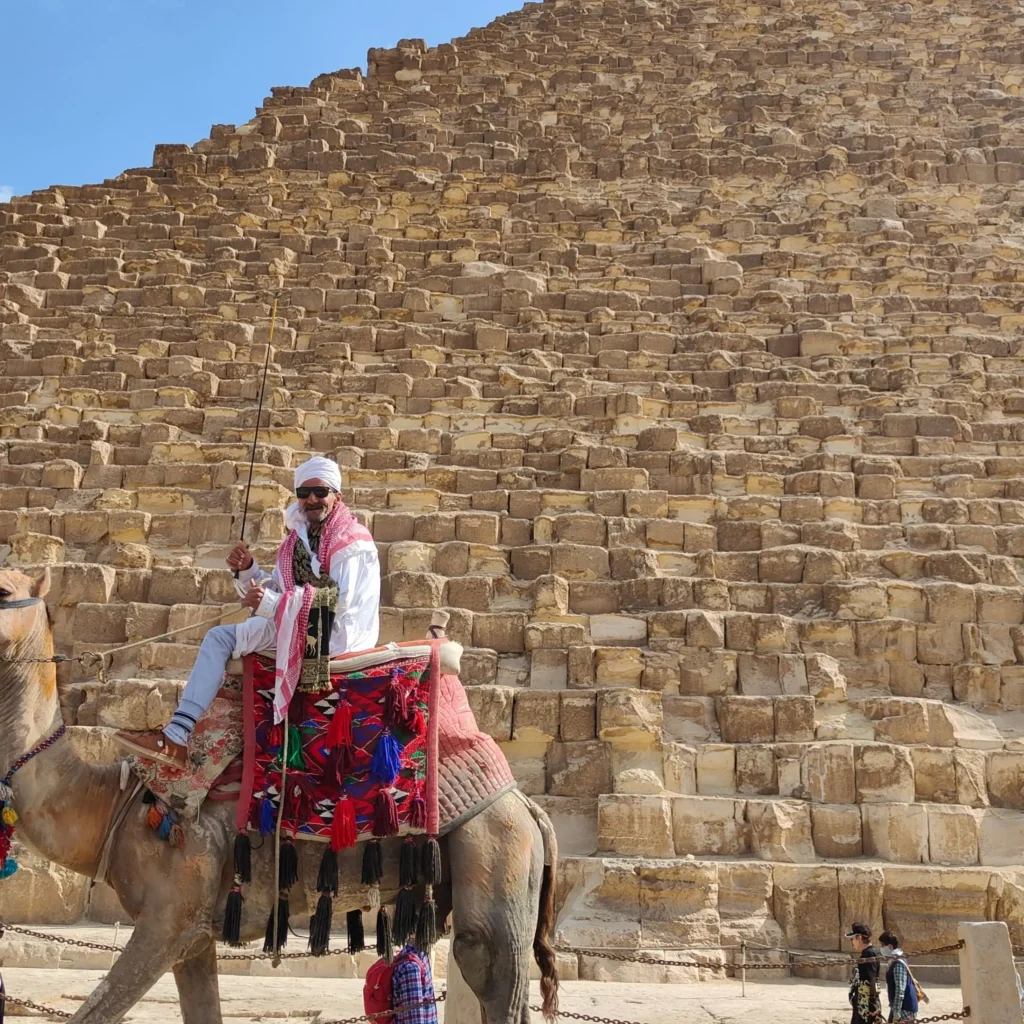
For instance, this man in the photo asked, “Would you take a picture of me?” I replied, perhaps naively and with some pyramid excitement, “Of course.” Later, I discovered he would follow me on his camel, asking for payment. The pyramids were far larger and more impressive than any photo could capture. We entered the Great Pyramid. Through a narrow passage opened by ancient grave robbers, we climbed to the “Pharaoh’s Sarcophagus” chamber at the top. The interior was a bit stuffy and warm, so we didn’t want to spend too long there. It took a few hours to fully explore the site.
Cairo Museum
This is a massive museum. Inside are thousands of artifacts, almost exclusively from ancient Egyptian civilization, displayed in chronological order. Statues take center stage, of course. Touring thoroughly, I’d estimate, takes over three hours. We saw numerous human and animal mummies here. The number of empty sarcophagi without mummies was far higher. These sarcophagi had intricate drawings. I once saw in a documentary that the illustrations on the sarcophagi depicted the person’s profession and life. What’s interesting is that the immense importance placed on these sarcophagi and mummies reveals that Egyptians once lived in a constant state between life and death. Even the pharaohs, while alive, had not grand palaces but marvels like pyramids built for them to be laid in after death, illustrating how deeply rooted this belief was.
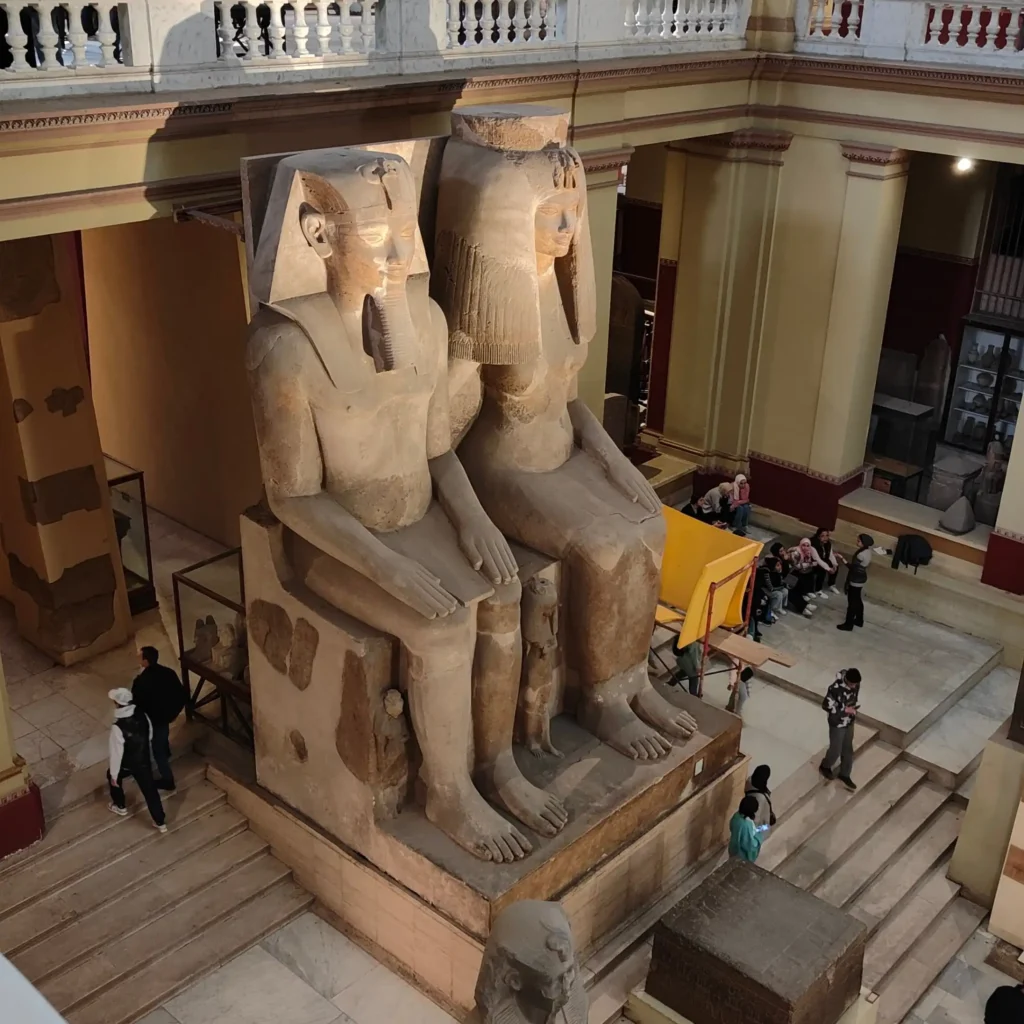
There are many ship models in the museum, complete with human figures. Some of these represent an escape from the horrors of the apocalypse via the Nile. In the pyramids, too, there is a large ship relic in an open space. It was believed that the pharaoh would exit his sarcophagus and descend to the Nile in this ship during the apocalypse. Some of these ship models are also thought to symbolize the workers transporting materials along the Nile. Tutankhamun’s famous treasure is stored in a special room here. The vast number of artifacts and the fact that some lack protective glass can be viewed as either a lack of care or a display of Egypt’s wealth in historical artifacts, where new items seem to surface daily.
Churches
In Cairo, some churches dating back to the Roman era are located in a Christian neighborhood near the Nile. They are well-maintained and attract many visitors. The remnants from Rome’s relatively brief rule add cultural richness to Cairo.
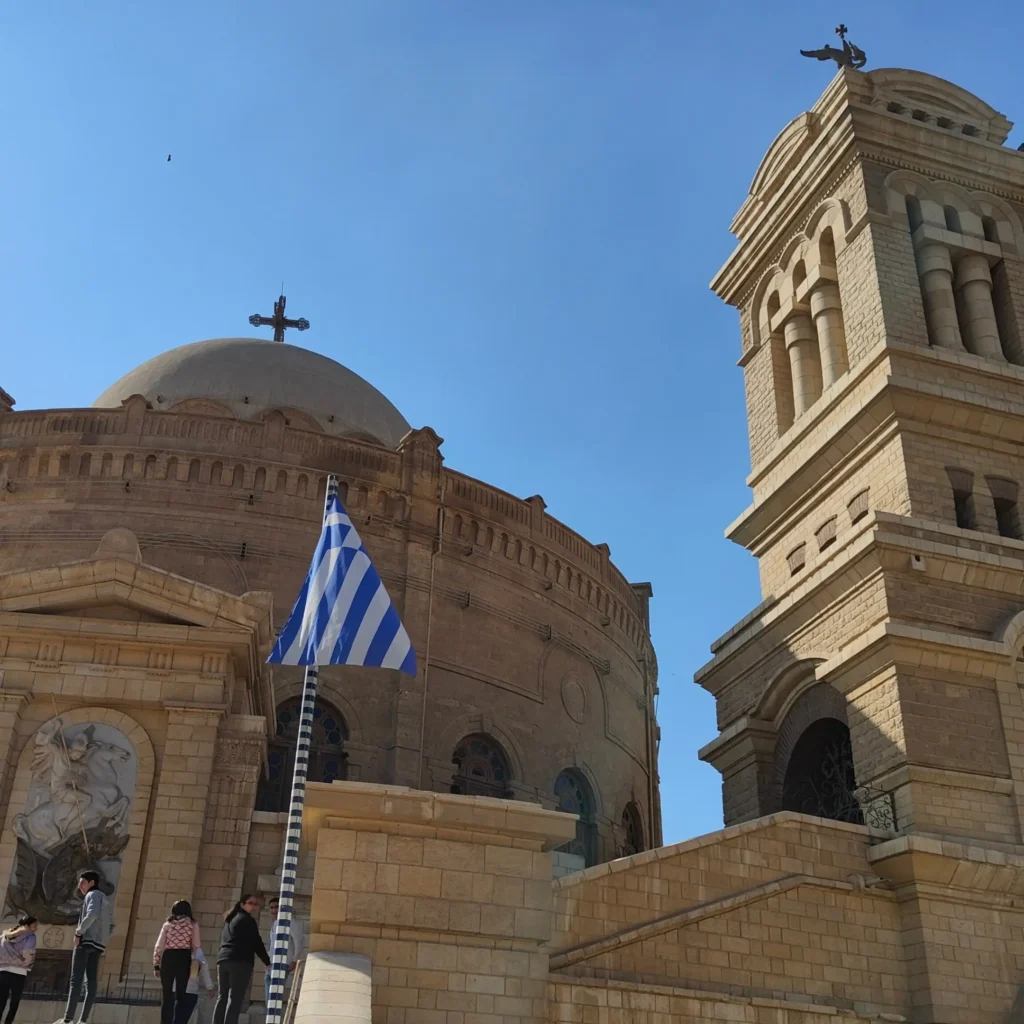
Al-Azhar Mosque and Imam Hussein Mosque
The Al-Azhar Mosque and complex, a Fatimid legacy, is the heartbeat of Cairo. It seems that knowledge has blended here, drawing people worldwide for about a thousand years to study. Initially opened with a university-like mission, it was later closed during Saladin’s rule when it was a Shia center. It was eventually reopened with Sunni additions and served as a scholarly center throughout the Mamluk and Ottoman periods. Even today, in Al-Azhar’s white courtyard, one can see students from Indonesia, America, Turkey, Uzbekistan, and other nations, despite recent political crises. What remains from the Fatimids is the minaret, part of the structure, and, of course, the intention of knowledge.
The Imam Hussein Mosque is much different. Also built by the Fatimids, this mosque houses the head of Imam Hussein, kept in a grand shrine within a separate room. To reach the mosque opposite Al-Azhar, you pass through an underground tunnel. As you emerge from the tunnel, you’ll notice a swift shift in the crowd. Many older-dressed Sufis gather around the mosque. I could hear their shouts from the room with the shrine as I entered the mosque. When we entered, people were tossing money into the room. A man, who seemed to be an attendant, asked us, “Do you have a gift for Hussein?” To which we replied, “The best gift is a Fatiha.” And we left.
Khan El Khalili
I’ve never seen a market like this. With its maze of streets and courtyards, it resembles the Grand Bazaar but is much larger and livelier. Despite visiting every day, I feel I only saw half of it. Even the simplest shops stayed open almost until morning. The goods are organized by category, and you can find anything here. Especially the mother-of-pearl craftsmanship is exceptional, and prices are quite reasonable compared to Turkey. Bargaining is essential here, and it’s customary to negotiate the price of nearly everything.
Mamluk Mosques and the Mosque of Amr Ibn al-As
There are many Mamluk mosques nearby, each immense and highly artistic. The architecture is unique. Unfortunately, many of these mosques are poorly maintained, even neglected. In some cases, you must enter with shoes, and as the floors are quite dirty, people receive prayer mats from the attendant to pray. Entrance fees apply even for worship in some cases. It’s a sight that feels like one of the greatest betrayals to cultural heritage.
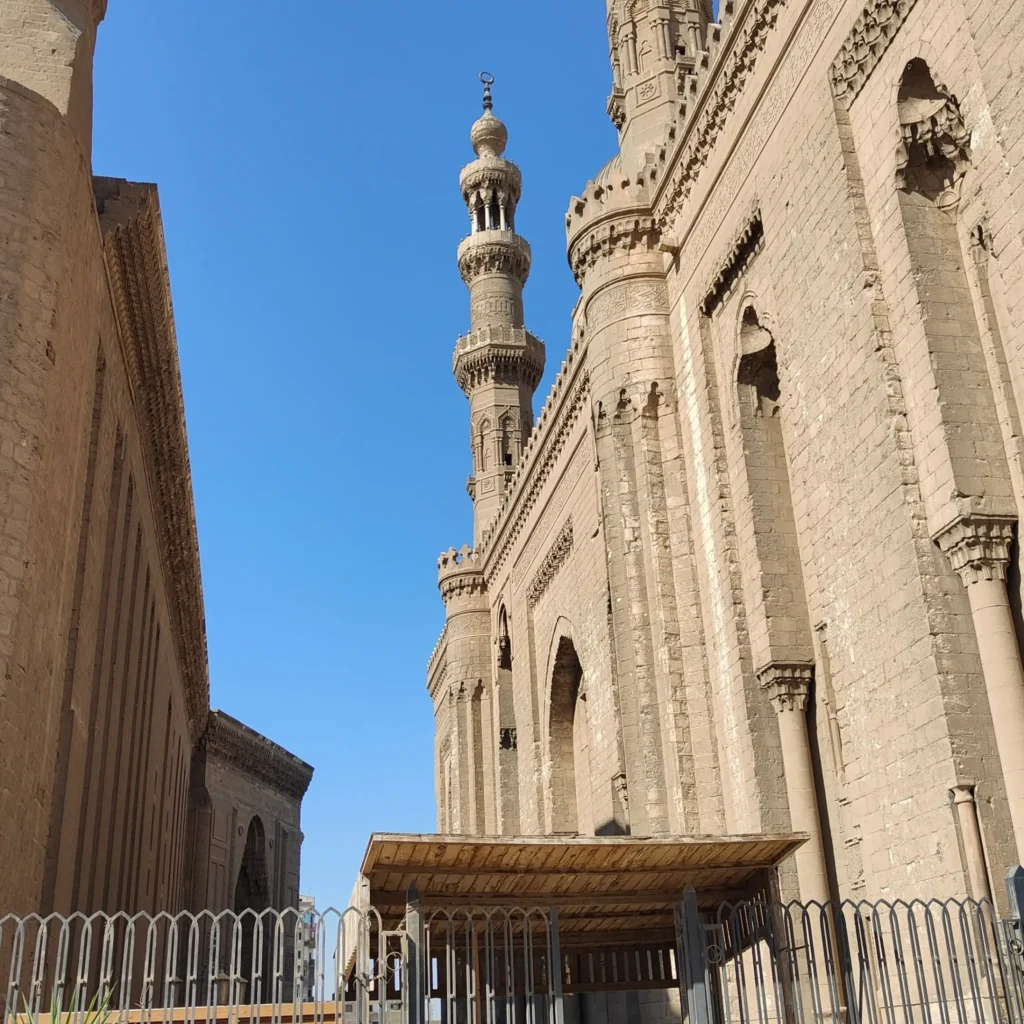
Citadel of Saladin and Mosque of Muhammad Ali Pasha
A towering fortress with a mosque built centuries later. From afar, the mosque’s exterior isn’t very appealing, but stepping inside, you’re immediately enveloped by a stunning atmosphere that almost transports you to Istanbul’s Dolmabahce Palace. Architecturally, it’s one of my favorites in Egypt. Muhammad Ali Pasha’s palace on one of the Nile’s car-accessible islands is another must-visit spot, with lush gardens and charming mansions. I suggest visiting here last and reading a bit about Muhammad Ali beforehand.
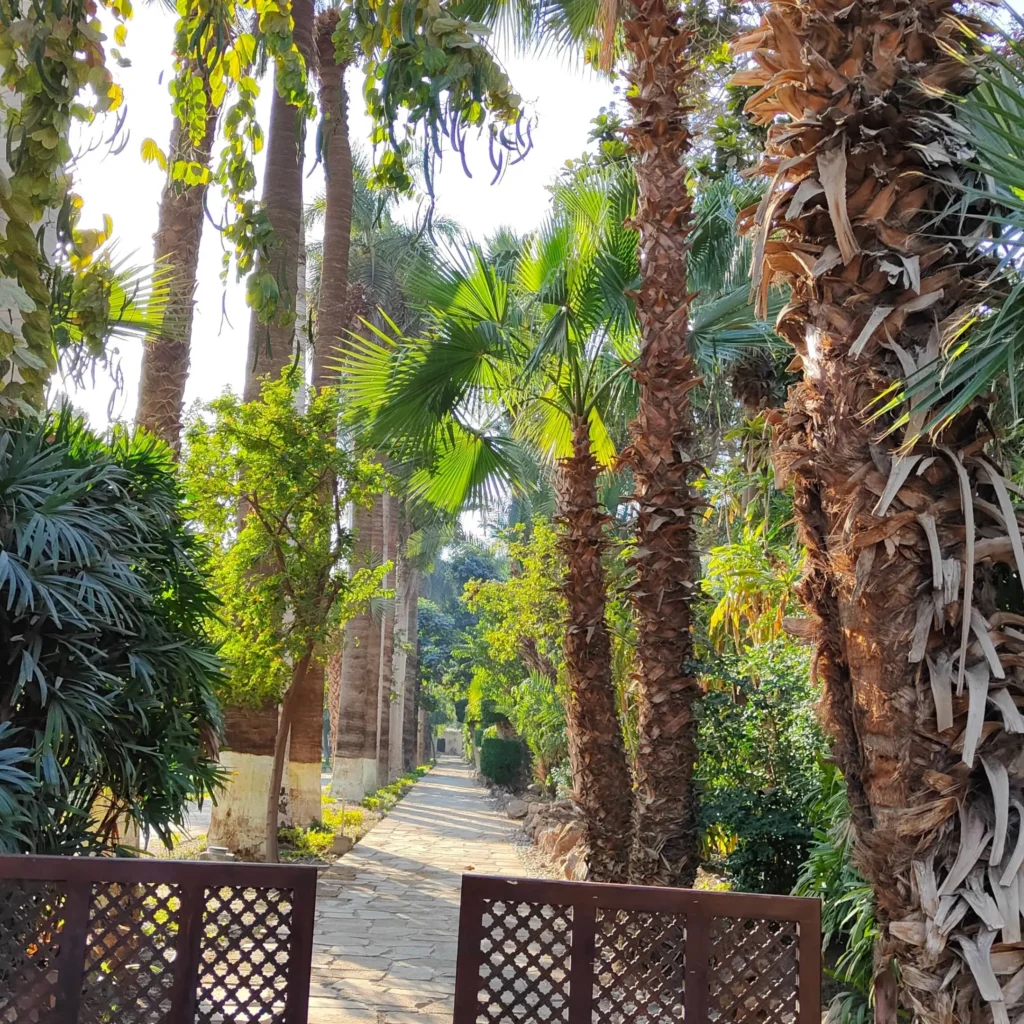
The Nile
Lastly, let’s mention the Nile, the primary element gathering all these civilizations here. Though its width varies, it isn’t quite a strait, but you can take a boat tour or relax at a riverside café.
Cairo is undoubtedly a city that can’t be fully grasped in just a few days. The city’s crowds and challenges, like persistent vendors, make it difficult to explore easily. However, after the journey ends, you’ll realize what a world you’ve stepped into and the legacy of how many civilizations you’ve witnessed in one place.

